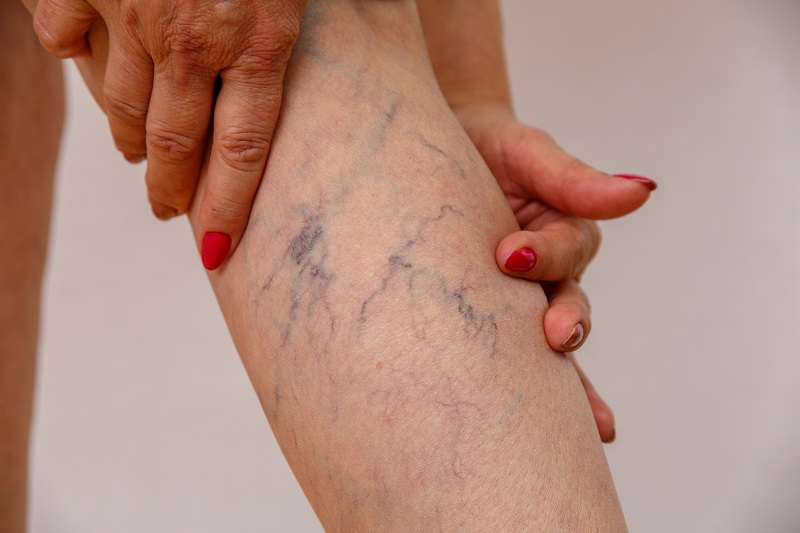Health
The Association of Varicose Veins to Deep Vein Thrombosis
by Sara Stringer
As women and men age, it is common for them to develop varicose veins in their lifetime. The Women’s Health Institute reports that over 40 million people of both genders have varicose veins, with a higher percentage in women. Some individuals believe it is a minor problem and receive treatment for cosmetic reasons. Doctors and scientists, through research and studies, found that the condition can lead to deep vein thrombosis, a serious blood clot condition. While some patients show no symptoms, some of them experience leg pain, fatigue, and swelling.
Differences Between Varicose Veins and Deep Vein Thrombosis
Varicose veins are blue or purple bulges usually formed on the legs, feet, and/or groin. Women may notice spider veins on the lower legs in their 40s and overtime see the vein protrude from the skin. The conditions are minor and caused by prolonged standing and walking that increases pressure in the veins. Although the problems may be insignificant, men and women should seek leg vein treatment in Macon, Georgia, to avoid complications and associated symptoms. If the area of varicose veins becomes swollen and itchy, it may a serious condition called deep vein thrombosis.
Deep vein thrombosis forms a clot in the blood vessel of a large and deep vein that goes through the muscles of the lower leg. In some medical cases, clots dissolve on their own. In others, the disorder can lead to pulmonary embolism, a more severe condition. To avoid complications, treatment is a requirement. Visible varicose veins are a risk factor for developing vein thrombosis, among other factors. Regardless if you have spider or varicose veins, have the conditions examined by a licensed specialist to avoid further complications and symptoms.
What Men and Women Can Do to Reduce the Risk of Vein Disorders
Whether you are a woman or man, you can reduce your risks of developing vein disorders by exercising routinely and eating a balanced nutritional diet. You must monitor your weight and the intake of certain foods. Spider veins, varicose veins, and deep vein thrombosis are preventable if you make adjustments in your lifestyle. Women should avoid wearing high-heel shoes, tight clothes, and girdles that restrict the normal circulation of the blood. If your clothing is uncomfortable and restricts your breathing because the clothing is too tight around the groin, legs, and waist, don’t wear it.
Research studies discovered that obesity is another cause of varicose and spider veins. To maintain overall health, physicians suggest people should exercise regularly, preferably five to six times per week for thirty minutes each day. Regular exercise, including moderate walking, jogging, aerobics, cleaning the home, and yoga will help you lose excess pounds and prevent other medical conditions and illnesses. To accomplish your goals in losing weight, eliminate junk and processed foods from your diet. Substitute those foods with food items containing healthy fats, carbs, minerals, vitamins, and proteins.
Symptoms of Varicose Veins
- Swelling in the lower legs
- Itchiness around the varicose veins
- Burning and throbbing sensation in the leg
- Achy legs
- Ulcers on the skin near the ankles
- Muscle cramping
Symptoms of Deep Vein Thrombosis
- Pain in the leg and hip
- Tightness of the skin
- Redness of the skin
- Skin is tender
- Vein area feels warm
- Swelling in the leg
Important Risk Factors
Deep vein thrombosis and varicose veins have similar risk factors, including family history, obesity, pregnancy, gender, and age. Researchers associate both conditions to people who have a history of family members developing varicose and thrombosis veins. Vein specialists believe extra weight is a key factor because it puts extreme pressure on the veins.
Pregnant women sometimes get varicose veins because of the weight gain that strain the lower legs. People over age 60 are more likely to develop vein conditions. Risk factors of deep vein thrombosis include visible varicose veins, inflammation disease, and various cancers.
Research associates varicose veins to deep vein thrombosis, the main reason to seek treatment. If you are a woman and have spider or varicose veins, consult with a medical vein specialist at a reputable health institution for women. People can have it treated and removed permanently with a variety of treatment options.
About the Author
Sara Stringer is freelance writer who enjoys writing about natural health alternatives. In her spare time, she enjoys maintaining an active lifestyle through swimming and practicing yoga.





